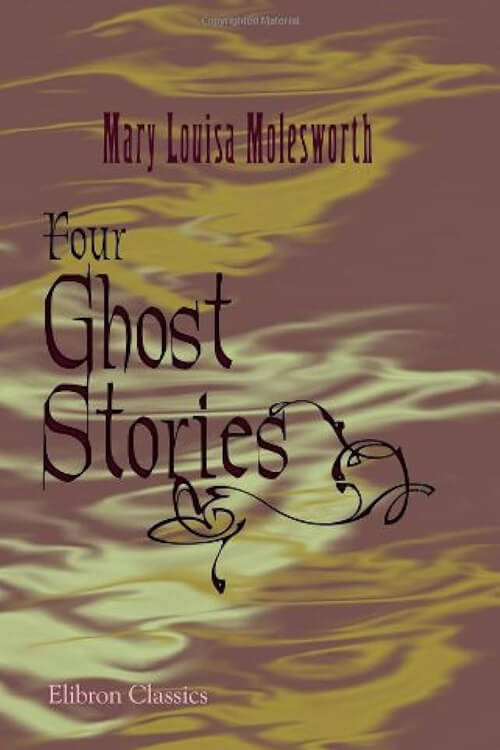
Four Ghost Stories
I have never seen a ghost (I am not sure I wish ever to do so), but I have a friend whose experience in this respect has been less limited than mine. Till lately, however, I had never heard the details of Lady Farquhar’s adventure, though the fact of there being a ghost story which she could, if she chose, relate with the authority of an eye-witness had been more than once alluded to before me. Living at extreme ends of the country, my friend and I seldom meet. Still, a few months ago, I had the good fortune to spend some days in her house. One evening, our conversation fell on the possibility of so-called “supernatural” visitations or communications; suddenly, what I had heard returned to my memory.
“By the bye,” I exclaimed, “we need not go far for an authority on the question. You have seen a ghost yourself, Margaret. I remember hearing it alluded to before you, and you did not contradict it. I have so often meant to ask you for the whole story. Do tell it to us now.”
Lady Farquhar hesitated momentarily, and her usually bright expression grew somewhat graver. When she spoke, it seemed to be with a slight effort.
“You mean what they all call the story of ‘my old lady,’ I suppose,” she said at last. Oh yes, if you care to hear it, I will tell it to you. But there is not much to tell, remember?”
“There seldom is in true stories of the kind,” I replied. “Genuine ghost stories are generally abrupt and inconsequent in the extreme, but on this very account, all the more impressive. Don’t you think so?”
“I don’t know. I am a fair judge,” she answered. “Indeed,” she went on rather gravely, “my opinion is that what you call true ghost stories are seldom told at all.”
“How do you mean? I don’t quite understand you,” I said, perplexed by her words and tone.
“I mean,” she replied, “that people who believe they have come in contact with—with anything of that kind, seldom care to speak about it.”
“Do you think so? do you mean that you feel so yourself?” I exclaimed with considerable surprise. “I had no idea you did, or I would not have mentioned the subject. Of course, you know I would not ask you to tell it if it is the least painful.
Read or download Book
Mrs. Molesworth
Mary Louisa Molesworth, née Stewart (29 May 1839 – 20 January 1921) was an English writer of children’s stories who wrote for children under the name of Mrs Molesworth.
Biography.
Her first novels, Lover and Husband (1869) to Cicely (1874), were for adult readers. They appeared under the pseudonym Ennis Graham. Her name occasionally appears in print as M. L. S. Molesworth.
Life
Molesworth was born in Rotterdam, a daughter of Charles Augustus Stewart (1809–1873), who later became a wealthy merchant in Manchester, and his wife Agnes Janet Wilson (1810–1883). Mary had three brothers and two sisters. She was educated in Great Britain and Switzerland, and much of her girlhood was spent in Manchester. In 1861, she married Major R. Molesworth, nephew of Viscount Molesworth; they legally separated in 1879. She lived for an early part of her marriage in Tabley Grange, outside Knutsford in Cheshire, rented from George, 2nd Lord de Tabley.
Molesworth is best known as a writer of books for children, such as Tell Me a Story (1875), Carrots (1876), The Cuckoo Clock (1877), The Tapestry Room (1879), and A Christmas Child (1880). She has been called “the Jane Austen of the nursery,” while The Carved Lions (1895) “is probably her masterpiece.” In the judgment of Roger Lancelyn Green:
Mary Louisa Molesworth typified late Victorian writing for girls. Aimed at girls too old for fairies and princesses but too young for Austen and the Brontës, Molesworth’s books had their share of amusement but also a good deal of moral instruction. The girls reading Molesworth would grow up to be mothers; thus, the books emphasized Victorian notions of duty and self-sacrifice.
Typical of the time, her young characters often use a lisping style, and words may be misspelt to represent children’s speech—” geography” for geography, for instance.
She also became interested in supernatural fiction. In 1888, she published a collection of supernatural tales under the title Four Ghost Stories and, in 1896, a similar collection of six tales under the title Uncanny Tales. In addition to those, her volume Studies and Stories includes a ghost story entitled “Old Gervais,” and her Summer Stories for Boys and Girls includes “Not exactly a ghost story.”
A new edition of The Cuckoo Clock was published in 1914.
She died in 1921 and is buried in Brompton Cemetery, London.






